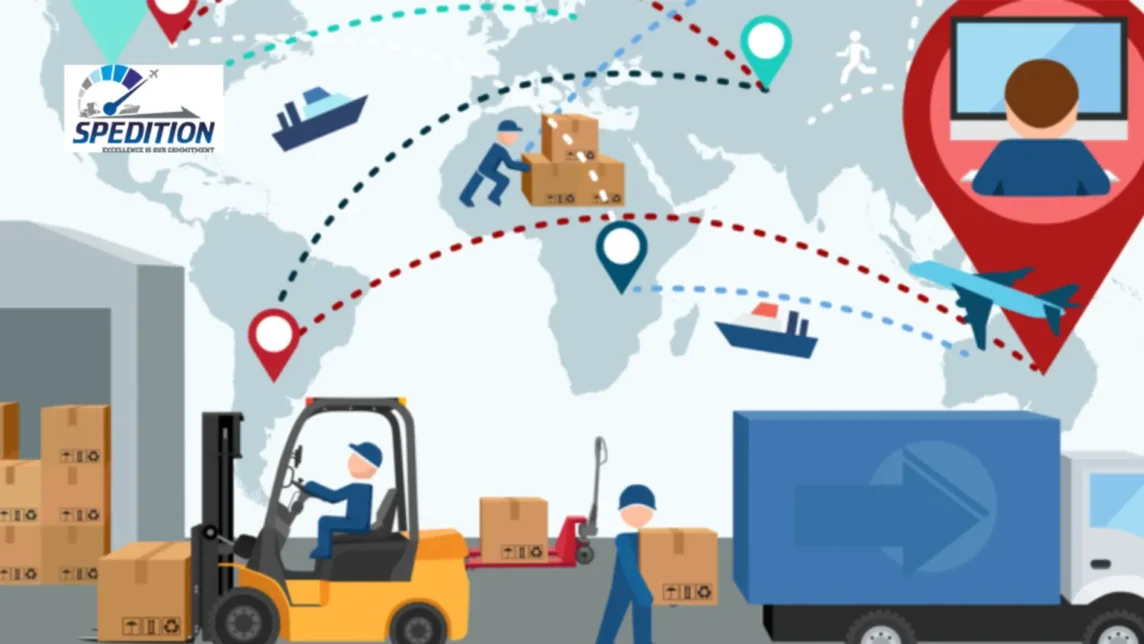
In the logistics industry, safety is a must-have phenomenon as far as general cargo handling is concerned. The same goes for cartons, crates, and heavy machinery. Everything must be moved with care, ensuring zero damage and ideal efficiency. Loading and unloading processes are often the most vulnerable point in the supply chain when it comes to businesses working with different types of freight.
At Spedition India, one of the top logistics companies in India we understand the challenges involved in general cargo logistics and prioritize safety as a core part of our operations. This blog tells the best practices for safe loading and unloading of general cargo—offering practical insights for logistics professionals to avoid delays, accidents, and losses.
Introduction
A broad variety of goods, packaged units like boxes, machines, crates, barrels, or palletized items, are carried as general cargo in discrete loads as opposed to bulk.
Loading and unloading are all very critical processes for any cargo operation. A single mistake can cause losses because of spoilt goods but also because of injuries and legal entanglements. This is why the objective of this manual is to document proven best practices of safe loading and unloading, which avoids and ensures the smooth flow of processes from an operation’s perspective.
Understanding General Cargo Handling
General cargo differs significantly from bulk or liquid cargo due to its unitized format. It demands proper coordination, equipment, and attention to detail.
Examples of general cargo:
- Boxes and cartons
- Industrial machinery
- Palletized consumer goods
- Fragile electronics
- Crates and barrels
Common risks in improper handling:
- Personal injuries to dockworkers
- Goods damage leading to losses or claims
- Load imbalance during transit
- Project delays or customer dissatisfaction
Learn more about how Spedition India manages cargo handling with precision and care.
Pre-Loading Preparations for General Cargo
Before loading begins, it’s essential to prepare both the cargo and the environment.
- Cargo Inspection
Ensure all items are checked for damages, confirmed for weight, and cross-verified against shipping instructions.
- Packaging & Labelling
Use reliable, high-quality packaging. Put clear handling guidelines, destination details, and any appropriate hazard warnings on the label of every item.
- Equipment Readiness
Inspect forklifts, cranes, dollies, and pallets. Equipment failure during operations can lead to costly interruptions.
- Staff Training
Personnel must undergo training on emergency responses, safety precautions, and handling procedures. At Spedition India, we keep our professionals up to date on the newest techniques and standards in the business.
Best Practices for Safe Loading of General Cargo
- Weight Distribution
Load the cargo evenly to avoid imbalance during transportation. Incorrect weight distribution can cause vehicle rollover or damage.
- Use of Lashing and Securing Devices
Tie down cargo using ropes, straps, or nets to keep it stable. Special securing is essential for irregular-shaped or heavy items.
- Stacking Guidelines
Follow proper stacking protocols—avoid overstacking, stack heavy items at the bottom, and leave clearance where necessary.
- Weather Considerations
Cover cargo with waterproof sheets during extreme weather and ensure a dry loading area. Wet surfaces can cause slips or cargo instability.
Are you looking for assistance with safe and professional cargo loading? Spedition India’s general logistics services ensure safe handling across all categories.
Best Practices for Safe Unloading of General Cargo
- Area Clearance
Clear the unloading zone of all unnecessary personnel and objects to minimize hazards.
- Communication
Maintain clear coordination between forklift operators, truck drivers, and floor supervisors. Use radios or hand signals for instant alerts.
- Gradual Unloading
Avoid hasty movements. Unload one section at a time and be cautious while handling fragile or heavy loads.
- Inspection Post-Unloading
Immediately inspect goods for any signs of damage or tampering- Document issues for claims or internal reviews.
Safety Equipment and Technology for General Cargo
To boost safety and efficiency, use appropriate safety gear and innovative tools:
Protective Gear
Helmets, safety shoes, gloves, and high-visibility jackets are mandatory for all handling personnel.
Automation Tools
Adopt pallet jacks, hydraulic lifts, and cargo trolleys to reduce reliance on manual labour.
Monitoring Systems
Use real-time sensors, load trackers, and digital logs to monitor cargo movement and environmental factors.
Common Mistakes to Avoid
Despite best intentions, some common missteps can lead to major issues:
- Over-reliance on manual labour without equipment
- Ignoring load and weight limits
- Skipping routine machinery checks
- Rushing the process to save time
- Poor communication across the team
Avoiding these mistakes is key to a safer and more streamlined cargo operation.
Conclusion
Effective logistics operations depend on safe loading and unloading. Every stage requires meticulous attention to detail, appropriate training, and the necessary tools, from planning and preparation to real-time execution. Putting safety first not only protects your products but also increases your overall dependability and efficiency.
At Spedition India, one of the top logistics companies in India, we are committed to delivering safe, professional, and end-to-end general cargo logistics services. We don’t just move goods—we move them responsibly.
Join the Conversation
Have questions or safety tips of your own?
Comment below or connect with us on our social handles:
Useful Links


